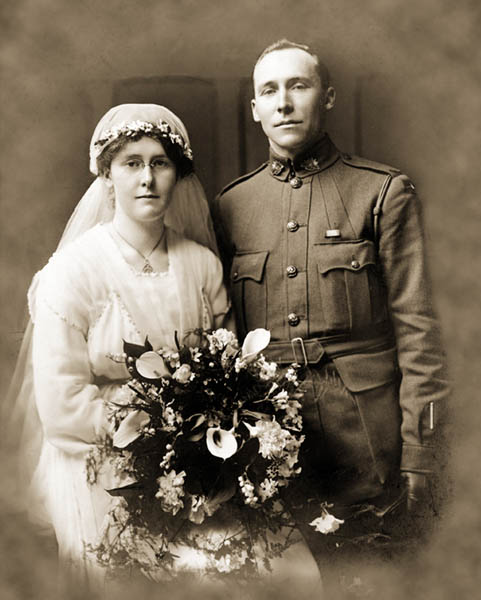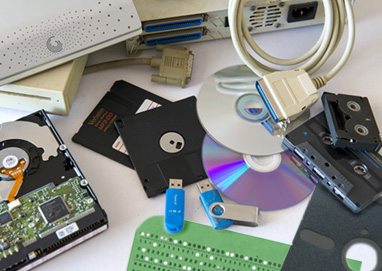Preserving Memories
 Generations before us preserved their memories and told their life story with cave paintings, hieroglyphics, paintings, prints, books and movies. They were carved in stone, painted on canvas and hung in galleries, bound and put on book shelves or printed and stored in shoe boxes under beds. They preserved their stories so future generation could understand what came before, who they were.
Generations before us preserved their memories and told their life story with cave paintings, hieroglyphics, paintings, prints, books and movies. They were carved in stone, painted on canvas and hung in galleries, bound and put on book shelves or printed and stored in shoe boxes under beds. They preserved their stories so future generation could understand what came before, who they were.
They were and still are tangible reflections of their story that can be seen by subsequent generations. You didn’t need passwords, power, software or a device to see them.
their story that can be seen by subsequent generations. You didn’t need passwords, power, software or a device to see them.
Digital photography is a medium that all but the film purist have embraced, with the advent of smart phones and digital cameras for the consumer there has never been a time in history that has been easier to capture and share images in large volumes – it is estimated that there are more digital images taken in one year than were taken in the entirety of the film era.
Digital is here to stay but we need to adapt and we need to understand what this means for preserving our memories.
 Meet Reg and Myra, 1919 was a challenging time in history but they like most of their generation had their wedding professionally photographed. The photographer printed a small selection of archival prints that over the years were displayed in homes, were stored under beds in shoe boxes and were passed on to their children and grandchildren.
Meet Reg and Myra, 1919 was a challenging time in history but they like most of their generation had their wedding professionally photographed. The photographer printed a small selection of archival prints that over the years were displayed in homes, were stored under beds in shoe boxes and were passed on to their children and grandchildren.
A century later those images form an important part of showing who they were, telling a story and reminding us that youth is a not a preserve of the current generation.
As an hypothetical or analogy if they had kept their wedding photographs on a electronic storage device, lets call it a modern hard drive, then by 1945 they would not likely be able to see them.
Their grandchildren and beyond would have no visual record of what Reg and Myra looked like when they were young, they would be names only.
Either the hard drive would have failed or advancements in technology would have rendered it obsolete or incompatible.
And in reality that is where we are at the moment – the 21st century will bring more advancement with technology in 25 years than any time in the past and if we rely solely on storing those very significant moments in our lives on digital devices then future generations will be able to see more of Reg and Myra’s generation then of ours.
I bought a computer twenty five years ago, it is not compatible with any current operating system or software, it can not read a DVD or CD (nor can the one I bought a month ago) it does not have USB /firewire port and if that change can happen in twenty five years past we have to ask what changes will happen twenty five years into the future.
I believe all of us share a common responsibility to ensure future generations can look back and see their heritage.
We need to understand that generations to come, our children and grandchildren, may want to look back at their ancestry but the rapid advancement of technology over that time may not allow them to either find or view those images.
I believe my industry has a duty to ensure society is not denied its visual history through that inevitable change in technology.
We all need to store digital images there are many ways to do it and it’s highly likely most will fail at some stage or become obsolete, you may well have some images that have already suffered that fate.
Reg and Myra were not trail blazers but they were smart enough to select those significant moments weddings, christenings, family portraits and have them printed. That shoe box under the bed that held their memories will outlive any technology because like the painting of the caveman it only required commitment to create it and vision to see it.
So what should you do with your digital images? Lets break it down to 4 sections.
Sorting and culling.
It’s so easy to take a lot of images of the same thing, location or event, we all do it but how many do you really need. One of the biggest stumbling blocks to ensuring we preserve those important images is the number of image we end up with each year.
A simple tip is to sort them into two groups – lets call them the “A” list and the “B” list.
The “A” list is the must haves, those images that are the best of that story, be ruthless you are looking for a few good images that tell the story. The rest go into the “B” list for when or if you need them.
Storage.
Most professionals keep 2 copies of their “A” list on two different storage devices, you should do the same.
Since the innovation of the modern computer there have been more than 23 evolutionary changes in data storage most within the last 30 years.
From punch cards, magnetic tape, hard drives, floppy disks and flash (USB) drives through to the Optical storage of CDs DVD’s and Blue Ray innovation does not stop and it’s highly likely the future of data storage is in Holographic or Molecular technologies still being developed.
Optical storage of CDs DVD’s and Blue Ray innovation does not stop and it’s highly likely the future of data storage is in Holographic or Molecular technologies still being developed.
History has proven that what is compatible in technology today is outdated or incompatible tomorrow both in software and hardware, try and plug in 15 year old mouse to a modern computer.
Most storage devices have a high risk of eventually failing, Data Recovery is a growth industry.
The cloud is a common solution today it has some advantages but at then end of the day you are relying on a device that someone else owns not being hacked by someone (or country) they don’t know to prove they can or send a political message. Cyber crime is also growth industry.
Whatever storage you decide on you will be required in the future to transfer your “A” list to the next new generation of storage, if you don’t it will eventually become redundant, like VHS and Beta Video eventually the technologies makes them superfluous.
Printing
Printing your important images, the best of the “A” list, is the most reliable way to preserve your memories for future generations and there has never been a better time to ensure you get quality images with a wide range of products to choose from.
Consumer Labs can produce prints of good quality with a reasonable life span and on a variety of media e.g. Paper, canvas
Professional Labs can produce archival prints on specialised media designed for exceptional quality and lifespan, texture and finishes including a broad range of art papers, canvas and acrylic block.
Photo books are an ideal way to capture an overall story or journey and if produced with the quality materials and skill will last lifetimes.
Albums are ideal for Weddings and larger stories, if produced by a professional their life and quality would be exceptional. A sad statistic is a large percentage of couples who get their wedding image on a disk never end up printing them. They don’t have to print them all but they should create an “A” list and print the key images.
Displaying prints
There is little in life that is not degraded by direct sunlight (UV light) the atmosphere and in some climates heat and humidity. Storing your images away from direct sunlight is essential. Internal artificial light is less of a factor but strong daylight should be avoided for those images that are important.
Prints and frames can be prepared with UV protective finishes and with materials designed to protect images, a reputable framer can help you with this as can a reputable Professional Photographer.
You also need to consider the size of any print you produce of an historically significant image, the optimal size is around 10″x 8″ (A4) range it is large enough to retain good detail if it needs to be scanned in the future to regenerate the image (presuming the original digital file has found its way to the Digital Abyis) and not too large that it becomes a burden to store.
The Bottom Line
If you take digital images that record your history ensure they are backed up and kept up to date with current technology.
Identify the historically important images and print them.
All of the above is produced as a community service, as a professional photographer of 40 plus years I feel it is important to ensure society is not denied its visual history.
